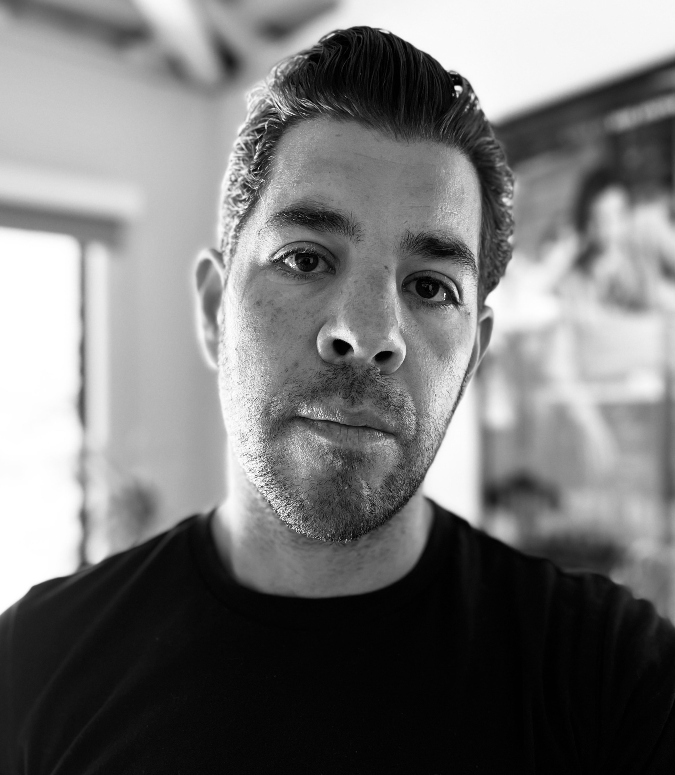Babylon is Oscar winner Damien Chazelle‘s fifth feature and the fourth he has entrusted to Editor Tom Cross, who won an Oscar for cutting Chazelle’s breakout 2014 film Whiplash, which the director followed with La La Land in 2016 and First Man in 2018. Cross earned a second Oscar nomination and an ACE Eddie Award for the former, and yet another Eddie nomination for the latter. Ever since Whiplash, Cross has been in high demand, and most recently, he co-edited Daniel Craig‘s final James Bond movie, No Time to Die, with Elliot Graham.
Babylon is Chazelle’s fictionalized look at Hollywood in the mid-1920s to mid-’30s, when the industry began to transition from silent movies to films with sound. This sea change is seen through the eyes of a diverse group of characters, including Diego Calva‘s immigrant Manny, who just wants to get onto a movie set; Margot Robbie‘s “wild child” Nellie LaRoy, who has always known she would be a star; Brad Pitt‘s Jack Conrad, one of Hollywood’s biggest silent-era stars, who is already on his way out; Jovan Adepo‘s jazz trumpet player Sidney Palmer, who will achieve fame only to have it besmirched with Hollywood’s inherent racism; and Li Jun Li‘s Lady Fay Zhu, an out lesbian performer who sees the writing on the wall as morals in America begin to change.
It might sound like a simple ensemble piece, but in fact, Chazelle has created a number of hugely impressive set pieces, from the debaucherous coke-fueled party-slash-orgy that opens the movie to the even more insane first day on set for fast friends Manny and Nellie, among others
Below the Line recently spoke to Tom Cross over Zoom, and he offered a terrific look into the way Chazelle thinks and works, as well as insights into some of the film’s crazier and more memorable moments.
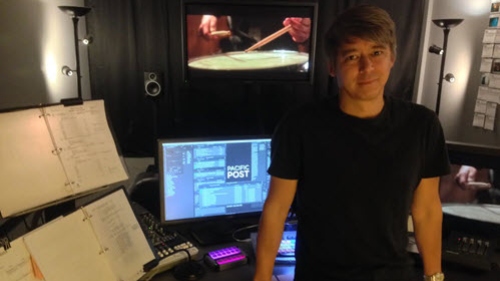
Below the Line: I’m curious about your background from before you started working with Damien, which was on the Whiplash short. How did you first meet him and get involved with this ongoing collaboration?
Tom Cross: I had done some assistant editing on some movies for this company, 2929. This producer at 2929, Couper Samuelson, moved over to Blumhouse, and tried to get Whiplash off the ground as a feature, and was having problems getting the financing. No one wanted to finance a movie about a jazz drummer. He and his other producing partner, Helen Estabrook, basically devised this plan where they would take 20 pages out of the feature script and get a crew together and have Damien direct it. Couper, this producer, asked me if I would be interested in cutting the short film. Of course, if I cut the short film version, I’d get first dibs on cutting the feature film, so I said, ‘Yeah, I totally would love to do it.’ I was an assistant editor, [an] aspiring editor, and I was game to cut almost anything.
He sent me the script, and I was just blown away. I mean, it was one of the best scripts that I’ve ever read, and it was electrifying [on] the page, and the script dripped of great cinema, in my opinion. I said, ‘Yeah, I’d love to meet this director.’ Couper made a little email introduction, and then Damien and I met for lunch in L.A., and we found that we just hit it off. We loved a lot of the same movies, and we talked about editing in movies that we really admired. It started from there, and then we did the short film version of Whiplash, and we had a great working relationship, and then he asked me to do the feature version.
BTL: Were both of those the typical rush jobs where you have to hustle to get everything finished before Sundance?
Cross: Yeah, the [short] was a rush, but it wasn’t as much of a rush as you would think. Damien and I, when we were putting it together, we didn’t even think of it as a short. We just thought that it was a little sizzle reel, or a little proof-of-concept to get prospective financiers interested. It was only when we screened it for Jason Blum and Jason Reitman, our two godfather producers, that they suggested sending it to Sundance and submitting it as a short film. We thought about it and thought, ‘Well, it really does kind of have a beginning, middle, and an end. It really is kind of a short film, so yeah, let’s send it to Sundance.’
I seem to remember we had plenty of time to send it to Sundance, the short film. It was the feature that was a real challenge, and the schedule of the feature film was difficult, I think, because of actor availability. They had to start very late, so for the feature film version of Whiplash, we started shooting Sept. 3. We had to submit to Sundance in the first week of November, I think, and I remember I locked the last reel Dec. 6, and then we played Sundance in January. That was the fastest post-production schedule I’ve ever had.
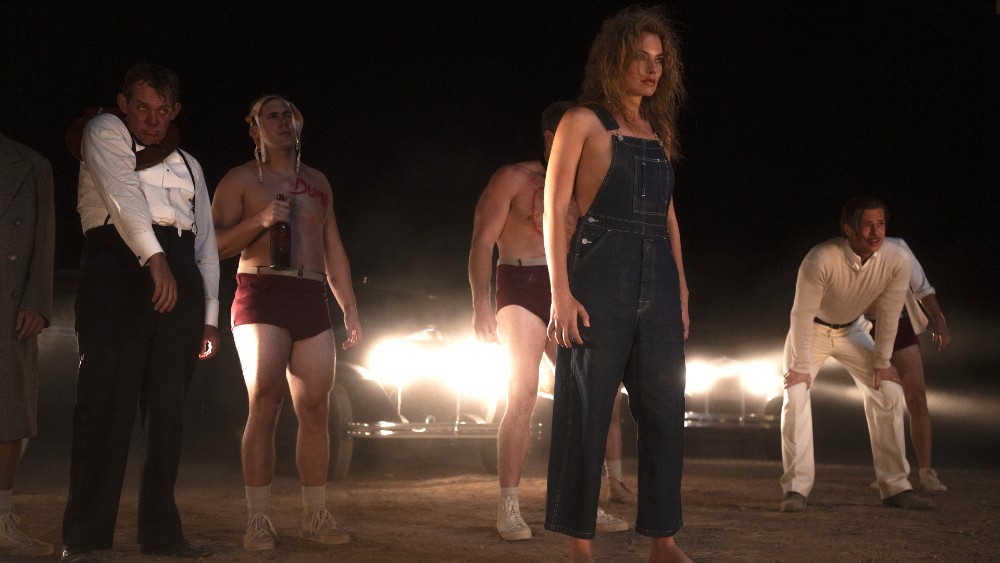
BTL: Let’s get into Babylon. Obviously, you’ve worked with Damien before, so when are you made privy to the fact he has a new movie he’s writing? Did he tell you anything about Babylon before finishing the first pass of a script?
Cross: He started talking to me about Babylon, or the ideas of Babylon, right after we finished First Man. We were traveling to Washington, DC for the premiere of First Man, which was going to be held at the Air and Space Museum in IMAX. And I remember talking to him on the train ride from Washington to New York, and he talked about Babylon. He talked about a book he was reading, which was called The Speed of Sound. That book is a technical history of the transition from the silent era to the sound era. Damien said that he was interested in telling a story about that. I remember picking up the book and trying to read some of it, which was really interesting and fascinating, and all along the way leading up to filming, Damien would send me drafts of the script. He sent me video auditions of actors that he was considering. He and I would have conversations about these actors and have conversations about the script.
Early on, he was communicating with me about the upcoming movie, and then somewhere along the way, he shared a list of reference movies. This is something he does with all his department heads. He compiles a big notebook, which is basically like a telephone book of pictures and reference photos, and then [a] list of movies that he’s looking at for inspiration. He’ll even start screening movies with department heads, just to get everyone on the same page. I can remember going to a screening with Damien and Producer Matt Plouffe, a screening of Cabaret. Somehow, Matt Plouffe secured a 35mm Technicolor print, and we watched Cabaret. And that [helped us] prepare for Babylon. He did a little bit of what he does at the beginning of every movie — send a list of reference movies, and reference materials. I get this stuff and I just kind of try to ingest it and stay on the same page as where his brain is.
BTL: I get the impression that you’re one of these editors who is all-in on a project. Once you start a project, you’re on it from beginning to end and you don’t allow yourself to be distracted by anything else. Is that accurate?
Cross: Unlike some other jobs in the film business, editors really can only just work on one movie at a time, for the most part. The schedule tends to be longer than a lot of other production-based people. I was on Babylon for over a year, and once I’m on it, I’m kept pretty busy during dailies, when I’m trying to put the film together and keep close to [the] camera [department] while Damien [is] shooting. Once Damien wraps photography and he comes in to work with me, I’m with him for breakfast, lunch, and dinner. We’re camped out in my editing room, and he loves the editing process, so we have a close collaboration that just gets very intensive, and [it] goes from morning into the evening.
BTL: Do you have an editing rig on set so you can work while Damien is filming and turning in footage?
Cross: Actually, I’m not on set. I rarely go on set. I didn’t go on set for Babylon, but I am starting to edit while they’re shooting, just in a different location. In the case of Babylon, I set up an editing room on the old Fox lot, and I’m cutting material as it comes in. I’m getting yesterday’s material, and I’m cutting it, and I’m trying to stay close to camera, as much as possible. Meanwhile, Damien is not coming in. He’s much too busy shooting, but he and I will communicate either through calls or texts, and I can tell him how footage is looking, or if I have any questions or issues. Likewise, he can reach out to me if he has a question or is worried about something or wants me to look at something quickly, I can certainly do that. So I’m editing parallel to him shooting.
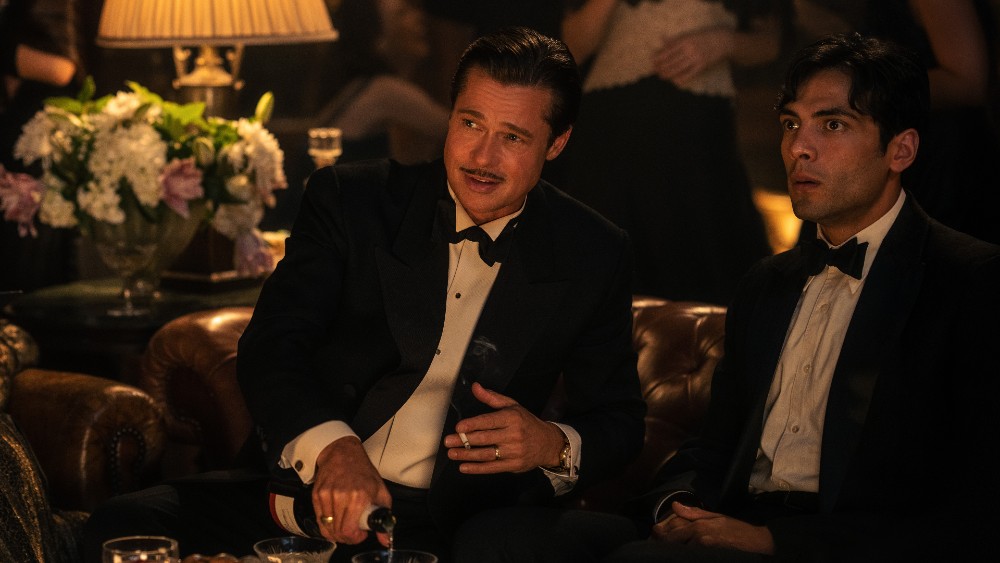
BTL: There are a number of huge sequences in the movie. The party sequence is one of them, and the first time we go to set and see the insanity of production, plus Nellie’s first sound movie, which is a hilarious sequence on its own. How did you figure out which ones to do first, or do you typically start an edit with the beginning of a film?
Cross: When Damien and I sit down to work together, we usually start editing the last sequence. That’s just kind of what we’ve done on past movies. In the case of Whiplash, we edited the last musical number, “Caravan.” In the case of La La Land, we started editing the fantasy dream epilogue. On First Man, we started with the Apollo 11 mission. That’s Damien’s choice. He always chose to do that for those movies, because the end sequence is the finale, and is often the reason why he’s making the movie in the first place. His thinking is, ‘Let’s do something really big and hard first, and then we can get it off our plate, and we can feel invigorated by accomplishing this,’ but then that will also inform where we need to get to with the rest of the movie.
In the case of Whiplash [it was], ‘start at the end, get that to a place where we’re really happy about it, and then go back to the beginning and start going through scenes chronologically.’ When we got to this movie, as you can see, there are so many tonal shifts, and you can see that our characters start at a certain place and finish at a very different place. To Damien, it didn’t make sense for us to do what we had done in the past and start at the end.
He said, ‘I think the beginning of the movie is going to be more indicative of the rest of the movie. It’s the beginning of the movie that contains the prevalent style, and the audience is going to use that as a roadmap for what follows, so we should start at the beginning.’ That’s how we chose where we started. We knew that this opening section, from the very first scene up to the opening title, which is over a half-hour of running time, would be the best place to start because the coked-up adrenaline and the high-energy pace and tempo really needed to be set up so that we could establish and understand what follows. So we started there.
BTL: I think that first half-hour is going to be make-or-break for most people. I loved it because it reminded me of some of Baz Luhrmann’s films, which often start with 20 minutes of insanity, and you’re either into it or you’re not.
Cross: Damien always said that this was going to be a big movie. It’s going to be long [and] it’s going to be epic. It’s the first ensemble we’ve ever done, because he wanted to show how Hollywood transforms people, but he wanted to show that through all these different perspectives. He knew it was going to be big, but he said it was really important that it be really maximalist. It should feel loud and big and out of control. It should not feel like a long movie that lingers. It has to have the pace of The Wolf of Wall Street and Whiplash.
BTL: How do Damien’s actors feel about shooting the end of the movie first? (Note: Damien doesn’t necessarily shoot the final scene first, Tom just typically starts his editing process with the final scene.)
Cross: I’m not directly privy to how they might feel, but it’s my understanding that’s something they work out with the director. I think it’s sort of a given that you often will not have the luxury of shooting in order. There are some films that you will be lucky enough to shoot in chronological order, and then that can help inform the performances, but more often than not, especially in the case of a movie like Babylon, which looks to me, as an editor, to be a challenging logistical nightmare, I think a lot of the schedule is going to be governed by locations and other things other than the actors. I think everyone kind of had to roll with it, but that’s something within the work that Damien does with his actors. They figure out and chart where [an actor] is supposed to be in their character during this part of the story or that part of the story.
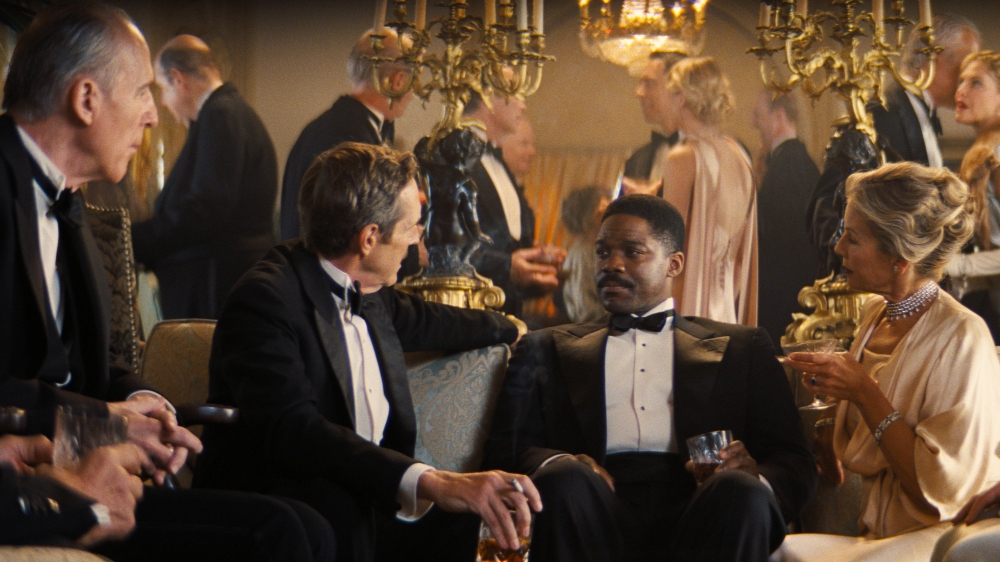
BTL: One of the nice things about the scene in which Nellie does her first sound picture is that it all takes place in a single location. How long did it take to shoot that entire scene and all the pieces that were needed to edit it together?
Cross: Damien always intended that to be a big cornerstone of the story; it is a turning point, and it’s a change in cinematic styles, a change [in] editorial style. I don’t think it really took weeks to shoot that. I don’t remember how long it took to shoot, but I know that Damien and I spent a lot of time trying to perfect that because that is probably one of the most important sections in the movie. I mean, this is a movie where out of the gate, we have the Wild West days of Hollywood. That was a big goal for Damien, for the beginning of the movie to present the Wild West of Hollywood, and then at a certain turning point, after sound is introduced to the film business, we had to pivot to show how different and momentous that was.
With that scene, Damien wanted to really have us do a slow fade-in on the set and give the audience time to reset themselves because we’re resetting the style of the movie, in a way. What came before was loud and maximalist, like a rollercoaster, but we had taken the audience to this place where silence plays a big part. The sound of a pin dropping is what you had to recalibrate the audience for, and that section — Nellie’s first sound check — we used to call that “the Whiplash scene,” because it reminded us of some of our challenges with Whiplash.
The challenge was, “How do you take band practice and make that as exciting as a war movie?” In the case of Babylon, “how do you take a man sneezing and make that feel like life and death?” Damien’s plan was always to do that through the performances and through the editing. This was a case — very, very much like Whiplash — where Damien knew that there would be power in repetition.
We really tried to lean into creating a visual language that would precede every take and then repeat that language, because then you’d start playing with [the] audience’s expectations. We were very careful to construct a sequence that would show the red light going on and a bell ringing, the slate boy running in and clapping the slate, the hand of the director cueing the action, and a close-up of the door opening and Nellie’s feet walking. We created this little preamble to every take, and Damien’s plan was to repeat that preamble at the head of every single take. We would start to build this repetition that would make the audience feel uncomfortable and start playing with their expectations. Every time we cut back to it, we cut it a little bit faster. At the same time, we’re trying to create a little momentum, a little something that the audience hopefully feels in their gut, and the hope was that you’re creating this visual momentum so that the audience really feels like they’re on this march toward doom.
BTL: How closely do you work with Composer Justin Hurwitz, who has been doing the music for Damien’s movies for a while? Do you usually get some music from him to cut to? How do you guys collaborate together?
Cross: Damien and I always work very closely with Justin Hurwitz. In the case of Babylon, Justin and Damien already had worked out melodies and themes for Babylon way ahead of shooting. By the time I started getting footage, I already had rough digital demos of Justin Hurwitz’s score. Contrary to the way I might work on other movies, I’m cutting directly to the music. Sometimes in other movies, especially if it’s an action sequence, I’ll cut things with the sound off. I’ll cut it with no music, no sound effects, nothing, just to find the rhythm through the picture. In the case of Babylon, I already had the music, so it made sense to cut directly to the music. When Damien and I started working together, we were always cutting to Justin’s music, which was important because much of the movie, especially the opening, was going to come out of the gate like chaos. We knew that Justin’s score would glue it all together, but at the same time, give us these percussive edges that we could bounce the picture off of.
[So] we cut to Justin’s score, and I would even do these rough music edits, and then, we would give it over to Justin, who was working in a room right next to my cutting room, and we would give it to him, and then he would make adjustments and his own refinements, and then give it back to me. And then I would have to further adjust the picture. We would have this kind of rinse-and-repeat cycle that would go back and forth, pretty intensely, for every single scene that contains music. Babylon is a music-driven film, so we worked [out] that process quite a bit. It was a process that we started on La La Land and continued on First Man, but we did even more intensely on Babylon.
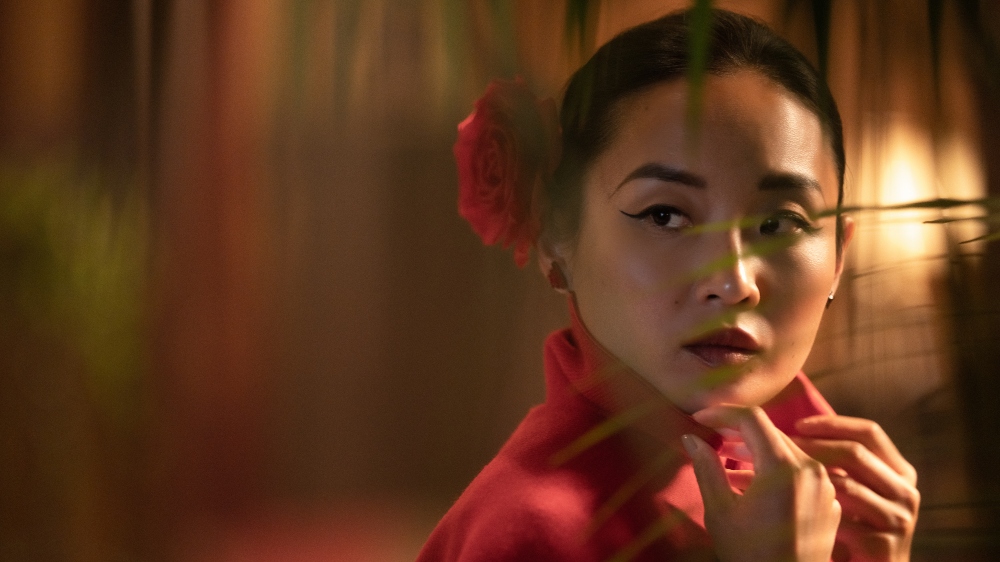
BTL: Are you guys doing that while Damien is still shooting? Are you working on stuff as soon as you have your setup?
Cross: No, because Justin already has given me the music, and I’m not making any adjustments yet. I’m just trying to have my picture follow his music. I try not to change Justin’s music while they’re filming. It’s when Damien is done filming and comes to collaborate with me, that’s when we start changing the music. Sometimes, we’ll cut a scene and we’ll find that we need to edit the music or contract it, but then sometimes, there’s stuff happening in the picture where we need to loop it or elongate it in some way. We’ll do that, but that more intense music-editing stuff happens when I’m working together with Damien.
BTL: You mentioned earlier how Damien normally likes to edit the ending of the movie first. Babylon has a really interesting ending, this montage of movies and colors. Did Damien tell you what he hoped to get across with that when he first brought it up? There’s obviously a lot of footage from other movies…
Cross: That scene was very interesting because that scene we created completely in the editing room. That scene did not exist on the page. For many months, we had the ending that was originally scripted, which did not have the montage. It ended with the character of Manny in the theater, and every time Damien and I watched the movie, by the time we got to the ending, it just wasn’t as emotional as both he and I sort of felt like it needed to be. We were really racking our brains for the longest time.
At some point, we went back to his original script and reread it. He wrote it in a way that filled in the blanks and filled your mind with emotions, and that’s not what we had in the film. And so, Damien devised an add-on that basically was in the spirit of what was on the page, but it was something that we had to completely create in the editing room. Damien came up with a list of films that he thought would be really great to use, and there were many more than what is in the final movie. Together, he and I started whittling those down and started giving it the shape that it has currently.
BTL: I don’t know if Top Gun was in there, but I was surprised there weren’t more Paramount movies in the mix.
Cross: We wanted to be very careful, because a big goal for that end scene was to create something that was more emotional and experiential, rather than informational. Damien definitely had an agenda for that final scene, but he didn’t want to cut it in a way that it became too predictable. That informed what types of clips we would have in the montage. We had to be careful not to have the montage just look like a promo for classic movies on TV, or a [celebratory] promo you might see in a movie chain. It needed to be its own thing. I mean, we were inspired by many sequences. One, in particular, was the Stargate sequence in 2001: A Space Odyssey. The most important thing was to create something that was impressionist and experiential, rather than informational.
BTL: Do you ever get involved with the marketing of the movies you’re working on? The trailers for Babylon have been pretty cool, but there were a few that were cut very rapidly, and others that had scenes that weren’t in the movie. That’s partially why I ask that question.
Cross: Not directly. All of these marketing materials always get approved by Damien, as they often are with directors. Damien sometimes will send me versions of the trailer or posters. Often, when he’s receiving these things, he and I are working together. He’ll just turn to me and show me his laptop or his phone and say, ‘Oh, take a look at this. They sent a new version of the trailer. What do you think?’ I’m not directly involved in the marketing but through Damien, I’ll lend my opinion if I’m asked.
BTL: I was also wondering because there were a couple of scenes in the trailer that didn’t make the movie, like the one with Brad Pitt tap-dancing.
Cross: I’ve worked on several movies — No Time to Die is one of them — where there are shots and scenes that are just not in the movie. I don’t think Babylon has too many more of those than other movies I’ve worked on. I think that’s a little bit the nature of the beast in that I think the trailer editors, who are usually really good at what they do, find shots that work better for them in the story they’re trying to tell than maybe what we need to tell our story in the movie. It’s almost like two different but related goalposts, if that makes sense.
Babylon is now playing in theaters nationwide. Click here to read our interview with Composer Justin Hurwitz and click here to read our interview with the film’s Makeup and Hairstyling team.



